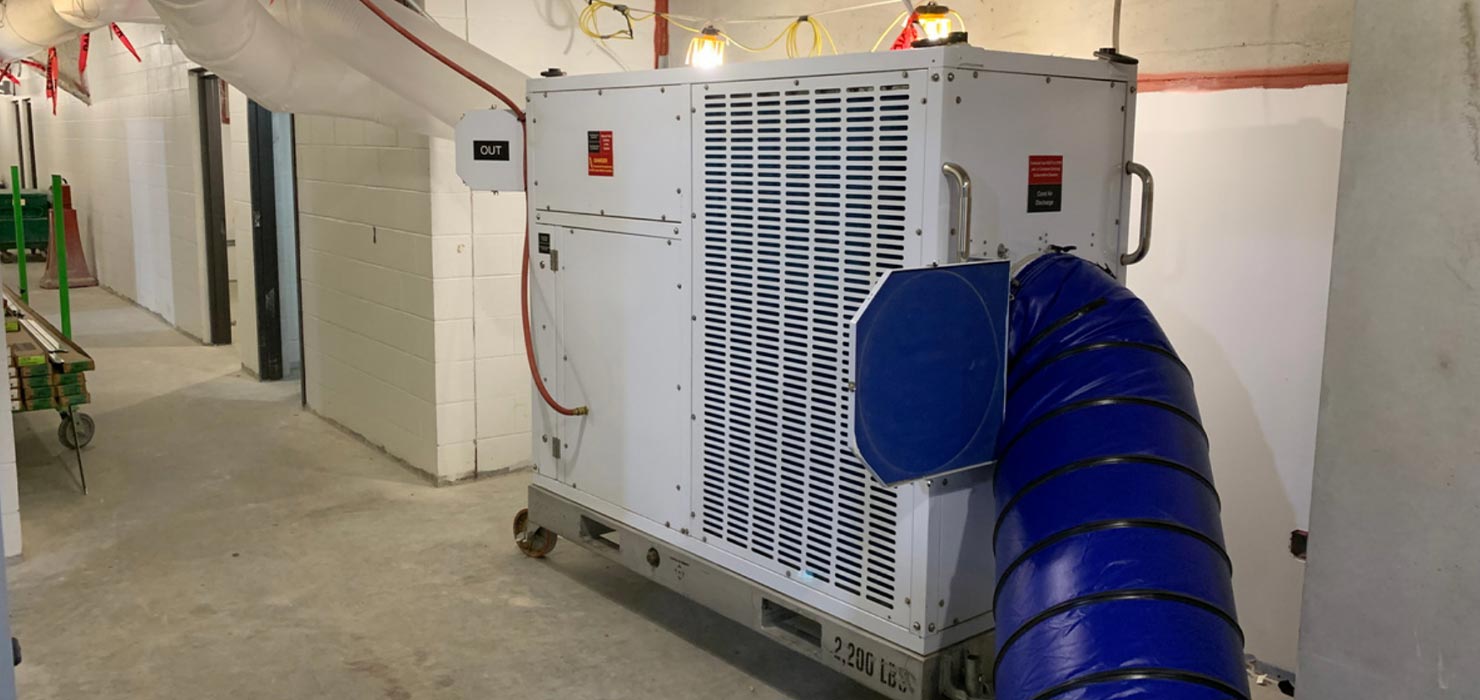Property management involves many responsibilities, and one aspect that significantly affects the tenant experience—yet is often overlooked—is climate control. Whether it’s a scheduled HVAC upgrade or an unexpected furnace issue in the middle of winter, maintaining a stable indoor environment is crucial.
Smart property managers understand that proper climate control during maintenance isn’t just a nice-to-have—it’s a necessary service that supports repair work and upholds your reputation as a reliable and professional property manager.
Common Maintenance Scenarios That Disrupt Climate Control
From HVAC overhauls to seasonal system shutdowns, certain maintenance tasks can leave properties vulnerable to temperature fluctuations and humidity issues if not properly managed. Some of the most common maintenance activities that affect indoor climate include:
- HVAC System Upgrades or Repairs: Temporary system outages during upgrades or repairs can disrupt airflow and temperature regulation throughout the building.
- Boiler or Furnace Maintenance in Winter: Any downtime during cold weather can quickly lead to discomfort for tenants and potential issues like frozen pipes.
- Cooling System Shutdowns in Summer: Even short interruptions in cooling can result in overheating, increased humidity, and tenant complaints.
- Renovations Involving Insulation or Airflow: Projects that disturb insulation, ductwork, or windows can compromise climate control and energy efficiency during and after the work.
Why Climate Control Matters During Maintenance
Maintaining a stable indoor climate during maintenance isn’t just about comfort—it’s essential for protecting your property and meeting tenant expectations.
Tenant Comfort and Satisfaction
Disruptions to heating or cooling systems can lead to complaints and dissatisfaction. Tenants expect reliable living or working conditions, even during repairs. Managing temperature and air quality helps maintain trust, satisfaction, and long-term retention.
Protecting the Building
Sudden changes in temperature or humidity can damage drywall, flooring, electronics, and plumbing. For instance, freezing temperatures during a furnace repair could lead to burst pipes—turning a routine job into a costly emergency.
Regulatory and Lease Compliance
Many lease agreements include climate-related requirements. Failing to maintain appropriate conditions could result in a breach of contract or non-compliance with local building codes. Taking proactive steps to control indoor climate helps avoid these risks.
Minimizing Disruption to Commercial Operations
In offices, retail spaces, or industrial buildings, climate control is essential to keeping business operations running smoothly. A well-managed environment supports productivity and helps prevent downtime or revenue loss during maintenance.
Climate Control Solutions Property Managers Can Use
To address these challenges, property managers can deploy temporary or supplemental systems to maintain climate control in both residential and commercial spaces:
Portable HVAC Systems
Ideal for large spaces or during complete system replacements, these units provide immediate relief and help maintain comfortable conditions during planned outages.
Zoning and Localized Heating/Cooling
Rather than heating or cooling the entire building, concentrate climate control efforts on high-priority or occupied areas. This targeted approach maximizes comfort where it matters most while reducing energy use and operational costs.
Flameless Heaters
Safe for indoor use—especially during winter maintenance—these heaters deliver powerful warmth without open flames or harmful exhaust.
Portable Dehumidifiers
Dehumidifiers are particularly useful during renovations or flood-related repairs. They help prevent mold and protect finishes and equipment sensitive to moisture.
Planning Ahead: Best Practices for Smooth, Climate-Controlled Maintenance
Effective climate control during maintenance starts well before any work begins. With a proactive approach, property managers can avoid surprises, maintain tenant satisfaction, and ensure operational continuity. Here are four best practices to keep your maintenance projects running smoothly:
- Communicate with Tenants in Advance
Informing tenants about the scope and timeline of the work sets clear expectations. It also lets them know what steps are being taken to maintain comfort and minimize disruption. Transparent communication builds trust and reduces the likelihood of complaints.
- Schedule During Off-Peak Times
Plan major maintenance during mild weather seasons or periods of lower occupancy whenever possible. This reduces the impact on tenants and makes it easier to maintain comfortable indoor conditions with supplemental equipment.
- Partner with Reliable Equipment Providers
Access to dependable climate control equipment is essential. Work with experienced vendors who can recommend, deliver, and install the right temporary solutions quickly and efficiently—especially during urgent or large-scale jobs.
- Conduct a Pre-Maintenance Site Assessment
Before work begins, evaluate the property to identify temperature-sensitive areas, potential airflow disruptions, and equipment placement needs. A thorough site assessment helps you develop a tailored climate control strategy for the project.
Climate Control: A Cornerstone of Professional Property Management
Managing indoor climate during maintenance is essential to protecting tenant relationships, preserving property value, and ensuring smooth operations. Prioritizing climate control during maintenance isn’t just smart—it’s a sign of professionalism and a long-term investment in your property and your reputation as a property manager.
REIC Specialty Rentals is your trusted partner for climate control solutions in any season. Contact our team today for personalized support tailored to your maintenance needs.

